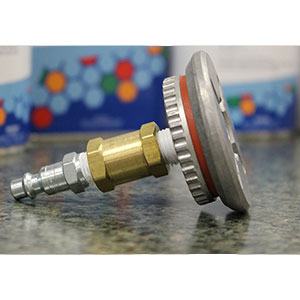I have just about had it with my vacuum bag connector and ready to either get some tips on how to keep it from leaking or get a better one, if a better one exists.
Currently I am using the following, but for me it is a real hit and miss and right now I have a tip to tip CF layup 1 hour in, the thing is leaking and the pump is cycling every 5 min. I have removed it, re-added it, sealed it with bag sealant tape and 5 min cycling is the best I can do unless I completely un-bag it which I won't do at this stage so I will ride this one out. I have used this attachment maybe 15 times and it has been the same way since day one, some layups the pump might cycle 2 or 3 times and others it cycles more frequently.
Before someone asks, I have already determined with certainty that it's the connector and not the bag or any other part of my system.
Tips on how to use this better or a better attachment are greatly appreciated.

Currently I am using the following, but for me it is a real hit and miss and right now I have a tip to tip CF layup 1 hour in, the thing is leaking and the pump is cycling every 5 min. I have removed it, re-added it, sealed it with bag sealant tape and 5 min cycling is the best I can do unless I completely un-bag it which I won't do at this stage so I will ride this one out. I have used this attachment maybe 15 times and it has been the same way since day one, some layups the pump might cycle 2 or 3 times and others it cycles more frequently.
Before someone asks, I have already determined with certainty that it's the connector and not the bag or any other part of my system.
Tips on how to use this better or a better attachment are greatly appreciated.













